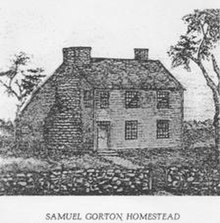Sally Clare Kellerman (June 2, 1937 – February 24, 2022) was an American actress and singer whose acting career spanned 60 years. Her role as Major Margaret "Hot Lips" Houlihan in Robert Altman's film M*A*S*H (1970) earned her an Oscar nomination for Best Actress in a Supporting Role. After M*A*S*H, she appeared in a number of the director's projects, namely the films Brewster McCloud (1970), Welcome to L.A. (1976) (produced by Altman, directed by his protégé, Alan Rudolph), The Player (1992), and Prêt-à-Porter (1994), and the short-lived anthology TV series Gun (1997). In addition to her work with Altman, Kellerman appeared in films such as Last of the Red Hot Lovers (1972), Back to School (1986), plus many television series such as The Twilight Zone (1963), The Outer Limits (1965), Star Trek (1966), Bonanza (1966, 1970), The Minor Accomplishments of Jackie Woodman (2006), 90210 (2008), Chemistry (2011), and Maron (2013). She also voiced Miss Finch in Sesame Street Presents: Follow That Bird (1985), which went on to become one of her most significant voice roles.[1]
At age 18, Kellerman signed a recording contract with Verve Records, but her first album (Roll with the Feelin' on the Decca label) was not recorded until 1972. A second album Sally was released in 2009.[2] Kellerman also contributed songs to the soundtracks for Brewster McCloud (1970), Lost Horizon (1973), Rafferty and the Gold Dust Twins (1975), and Boris and Natasha: The Movie (1992).
Kellerman did commercial voiceover work for Hidden Valley Ranch salad dressing, Mercedes-Benz, and Revlon.[3] Kellerman's animation work included The Mouse and His Child (1977), Happily Ever After (1990), Dinosaurs (1992), Unsupervised (2012), and The High Fructose Adventures of Annoying Orange (2013). In 2013, she released her memoir Read My Lips: Stories of a Hollywood Life, describing her trials and tribulations in the entertainment business.
Kellerman[4] was born in Long Beach, California, on June 2, 1937[5] to Edith Baine (née Vaughn), a piano teacher from Portland, Arkansas,[6]: 15 and John Helm "Jack" Kellerman, a Shell Oil executive from St. Louis, Missouri.[6]: 16 [4] She had an older sister, Diana Dean Kellerman. Her younger sister, Victoria Vaughn Kellerman, died in infancy.[6]: 18 Edith was a Christian Scientist and raised her daughters in this faith.[6]: 17–21
When Kellerman was in fifth grade, the family moved from Long Beach to the San Fernando Valley.[6]: 29 She spent her early life in then-rural Granada Hills in a largely unpopulated area surrounded by orange and eucalyptus groves.[7] During her sophomore year of high school, the Kellermans moved from San Fernando to Park La Brea, Los Angeles, where she attended Hollywood High School. She grew to stand 5'10.5" (179.07 cms). Due to her shyness, she made few friends and received poor grades (except choir and physical education) but appeared in a school production of Meet Me in St. Louis.[6]: 4–5
With the help of a high-school friend, Kellerman submitted a recording demo to Verve Records founder and head Norman Granz. After signing a contract with Verve, however, she was daunted by the task of becoming a recording artist and walked away.[8][6]: 14
Kellerman attended Los Angeles City College,[9] and also enrolled in Jeff Corey's acting class.[6]: 8 Within a year, she appeared in a production of John Osborne's Look Back in Anger staged by Corey and featuring classmates Shirley Knight, Jack Nicholson, Dean Stockwell, and Robert Blake.[10] Towards the end of the 1950s, Kellerman joined the newly opened Actors Studio West[11][12] and debuted before the camera in the film, Reform School Girl (1957).[13] To pay her tuition, Kellerman worked as a waitress at Chez Paulette.
In 1961, Kellerman underwent a botched home abortion, and went to a hospital for the first time (due to her Christian Science upbringing).[52] The relationship that had caused her terminated pregnancy was with bit actor William Duffy. Wikipedia
























